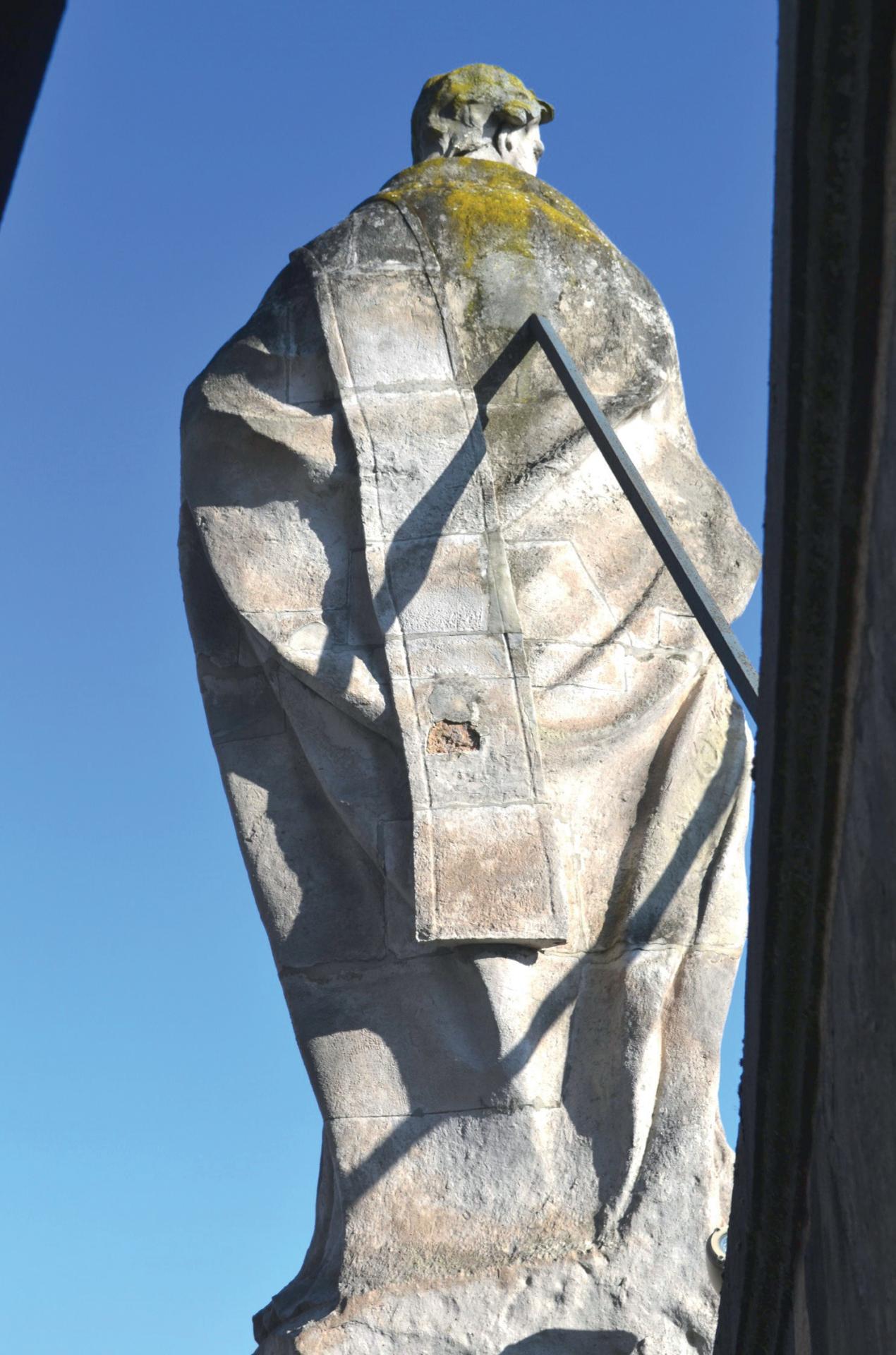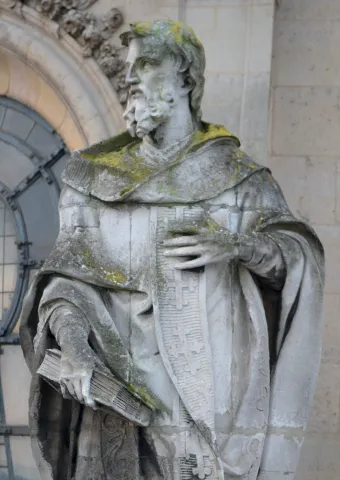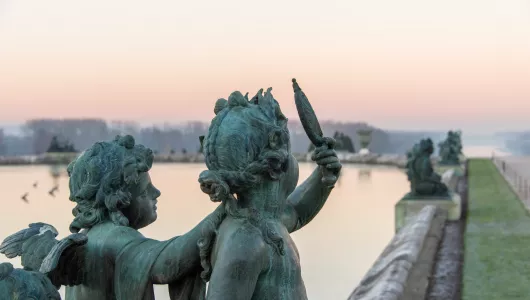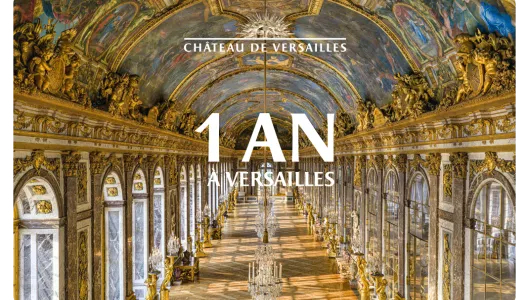Saint Athanasius
Saint Anasthasius is wearing bishop’s vestments, including a tunic, a chasuble and a stole draped over his shoulder in the manner of the eastern churches. His face, turned towards the east, is framed by short hair and a beard. His left arm is folded across his chest and he is holding a closed book in his right hand. Born around 296 into a wealthy Christian family, he entered the Egyptian clergy at an early age and became bishop of Alexandria in 328. His constant opposition to Arianism, of which Emperor Constantius II was a champion, obliged him to go into exile five times. On his death in 373, he left a considerable body of theological work and information about the Arian crisis. He is acknowledged as one of the four Fathers of the Greek Church.

Saint Athanasius - detail
© EPV/Thomas Garnier
THE SCULPTOR JEAN POULTIER
Received at the Royal Academy in 1684, most of his career as a sculptor was spent in the king’s service. His first commission at Versailles was the Water Parterre, for which he supplied the model for one of the eight groups of children destined for the corners of the two pools. He also sculpted a marble vase and the statue of Dido for the Royal Way and the Term of Ceres for Latona's Parterre. He created several reliefs for the interior of the Chapel, including one of an angel holding a chandelier, located above one of the western doors of the gallery, and the spandrel relief depicting the Prayer in the Garden of Gethsemane. His refined, dynamic style is powerful and elegant and makes Jean Poultier one of the sculptors who is most representative of Versailles art.







